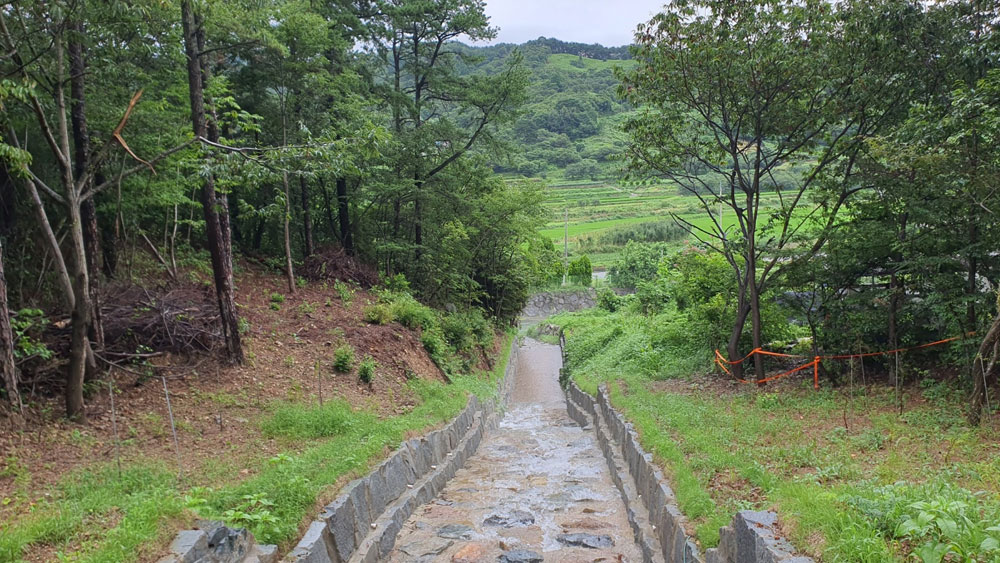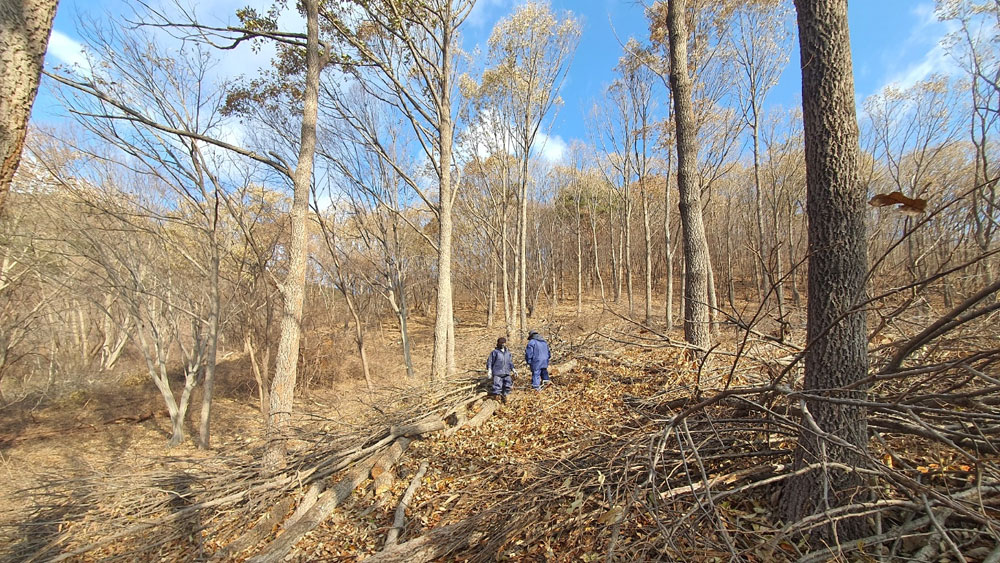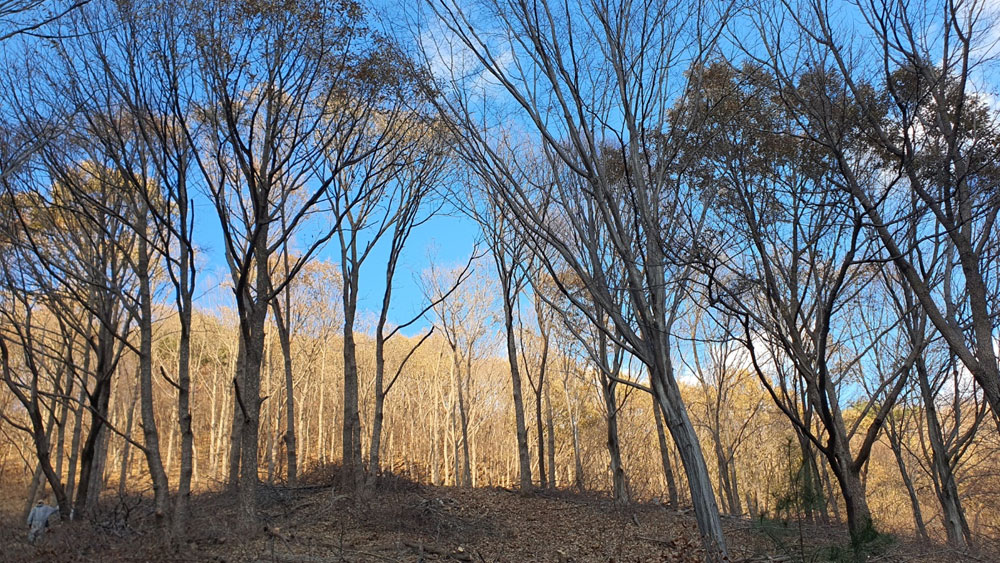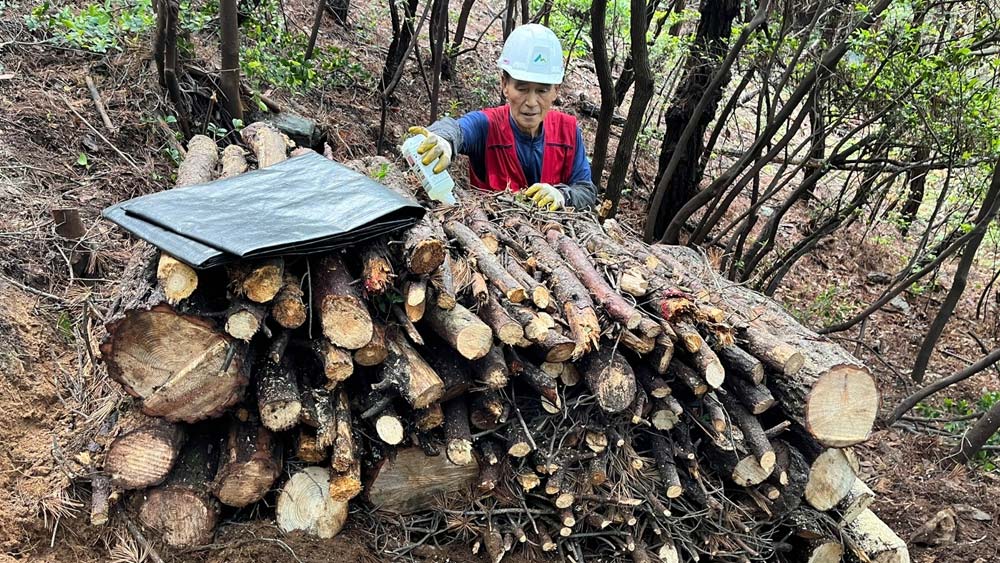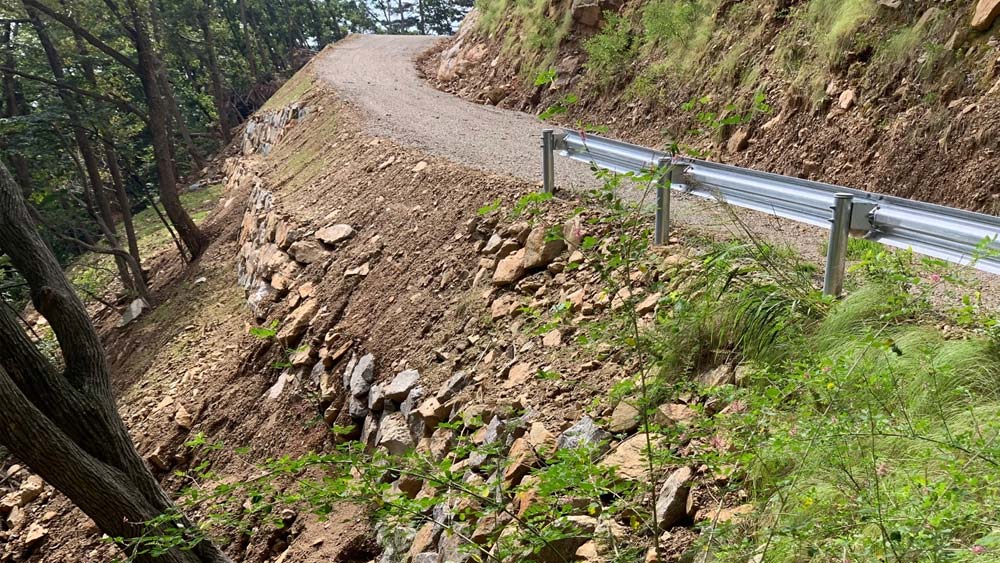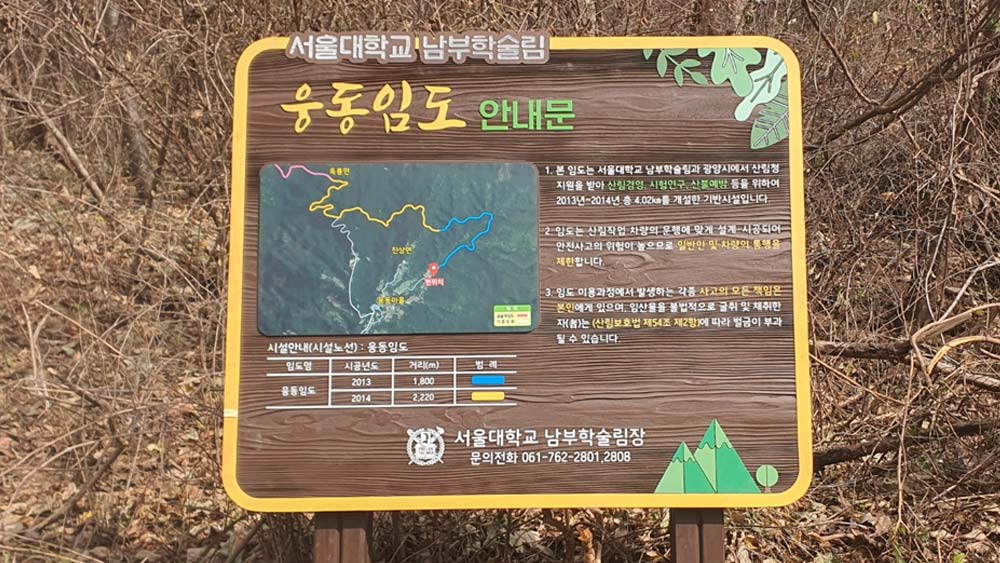The academic forest is carrying out projects necessary for academic forest activities and forest management, such as forest river basin management projects, afforestation and forest management, forest disease and pest control work, forest road network expansion projects, and forest road management.
Forest basin management project
The Forest Watershed Management Project (Stream Bank Protection) implemented stream bank protection measures (projects to reduce stream flow velocity and prevent erosion) to prevent forest damage such as forest slope erosion and sediment runoff caused by torrential rains in mountain valleys. Additionally, forest watershed projects are being carried out centering on landslide-prone areas to create a safe living environment from landslides. Design and construction that consider environmental aspects such as forest disaster prevention and water source cultivation are being implemented, and efforts are being made to prevent forest disasters through continuous management of landslide-prone areas and forest watershed projects.
Stew and forestry business
Since 1958, the Nambu Academic Forest has established systematic forest management plans and has implemented afforestation projects covering 1,300 hectares with the goal of sustainable forest management. Twenty-three tree species, including pitch pine, black pine, and Korean pine, have been planted. Recently, by creating demonstration forests that apply specialized forestry technologies, it is being utilized as a site for education and promotion for foresters on topics such as experimental research, forest management, and forest income. In 2023, 2 hectares of natural forest tending were carried out with the aim of creating healthy forest stands in Baekunsan Mountain, and byproducts generated from this process were used to produce logs for 300 shiitake mushroom beds and for making cutting boards.
Pinewood nematode control project
To protect the Korean pine plantations in the academic forest and prevent the spread of pine wilt disease, control measures are being implemented. Firstly, infected trees are removed using methods such as felling and incineration. As a preventative measure, control agents are used to eliminate vector insects like the Japanese pine sawyer, thereby minimizing the potential for spread. Because Korean pine forests constitute an important part of the forest ecosystem in the central mountainous region, monitoring and control efforts are being carried out not as a one-time measure, but from a long-term perspective.
National forest road project
The Nambu Academic Forest implemented projects for new forest road construction and structural improvement from 2012 to 2023. Forest roads are essential infrastructure for intensive forest management, administration, and research practice. They also offer benefits such as intensive management of forest resources, efficient afforestation and silvicultural management, and reduced logging and extraction costs. Through intensive management, forest roads contribute to increased forestry income, the revitalization of forestry operations, increased utilization of mountainous areas, and play a role in protecting forests, including functioning as firebreaks.


